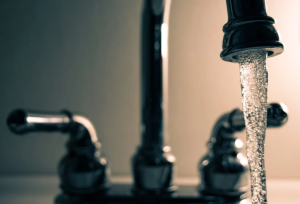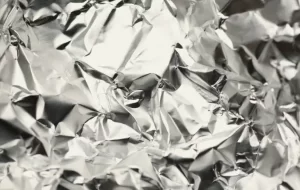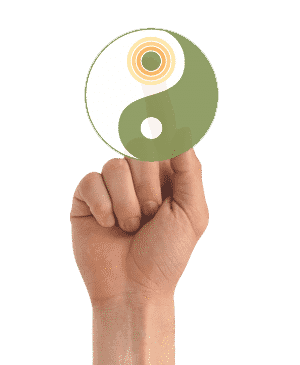The Evidence Is Hard To Ignore
Disbelievers of Traditional Chinese Medicine (TCM) love to cite ‘the placebo effect’; which is a term for people who feel better because they believe in their mind that the procedure will work.
However, the placebo effect for TCM has been debunked because of its successful use with animals (animals can’t comprehend the suggestion that TCM will work for them).
This heartwarming video below tells a story of a little sausage dog called ‘Buster’ who became paralyzed but was able to walk again thanks to acupuncture.
In fact, a new study published in the Journal of the Veterinary Medical Association showed that electro-acupuncture had close to an 80% success rate for treating paralysis with dogs, whereas surgery had only a 40% success rate (June 1, 2010, Vol. 236, No. 11, Pages 1225-1229).
Commonly used in Chinese hospitals
Before surgery, Chinese hospitals offer their patients a choice between anesthetic or electro-acupuncture.
40-60% of patients choose electro-acupuncture – being the cheaper option.
These aren’t minor operations. Patients routinely undergo abdominal and cardio-thoracic surgery while they are wide awake!
So how do acu-therapies like acupuncture work?
Your body is dotted with over 400 pressure-points called ‘acu-points’.
Stimulating these acupoints are like pushing a ‘reset button’ – especially for pain.
Over thousands of years, the ancient Chinese have discovered relief for hundreds of different diseases by stimulating these acupoints.
Practitioners stimulate these acupoints a variety of ways:
- Acupunture uses fine needles
- Acupressure applies finger pressure
- Moxibustion applies heat
- Electro-acupunture uses electrified needles
- Sound therapists use resonant frequencies
When stimulated, these acupoints release blocked energy. Traditional Chinese Medicine (TCM) dictates that energy must circulate freely throughout our body for us to live a long and healthy life. This is the cornerstone of acupressure and acupuncture.
The Chinese call this flow of energy ‘Qi’ (pronounced ‘chee’). Qi is the energy force that supports all life. The Japanese call it “Ki”, Guru’s of India call it “Prana” and some Polynesian cultures call it “Mana”.
Qi circulates through ‘energy veins’ called the meridian system. This maintains our physical and mental health.
Should our energy flow (Qi) slow down in one or more of our meridian lines, or if there is a blockage; an energy imbalance will occur. And if not treated, pain, illness and disease will manifest
Proof of the meridian system
Many studies have proven the Meridian system. But one of the most popular was conducted by French Physicians Jean Claude Darras MD and Professor Pierre de Vernejoul.
The objective of the study was to prove the existence of meridian lines (the channels that Qi energy flow through).
They injected the isotope tracer Te99 into the acupoints of volunteer patients and then monitored the tracers movements using a gamma imaging camera.
The tracers traveled along the exact meridian lines within minutes after injection.
To challenge their findings, they injected non-acupoints points (that aren’t connected to the meridian system) – finding that the tracers simply pooled up and remained in the same spot.
Interestingly, tracers flowing through diseased parts of the meridian system slowed down dramatically or stopped – compared to a fast flow around healthy parts of the meridian system.
Acu-therapies have been proven to be an effective treatment for 100’s of pains and ailments, such as:
(Acupuncture: Review and Analysis of Reports on Controlled Clinical Trials By World Health Organization)
– Strong pain
– Tooth ache
– Gout
– High blood pressure
– Depression & Anxiety
– Insomnia
– Fatigue
– Obesity
– Arthritis
– Skin problems: Psoriasis, Eczema & Acne
– Fertility issues
– Neurological disorders: Migraines, Neuralgia, Bell’s Palsy,
– Menopause
– Addiction: Food, Nicotine, Alcohol, Opioids, Cocaine
– Respiratory disorders: Asthma, Hay fever, Bronchitis
– Nausea & Vomiting
– Acid reflux
– Sciatica
– Tennis elbow
– Impotence
– Fibromyalgia
– Irritable Bowel Syndrome
– Deafness
– Tourette Syndrome
– Earache
– And many more…
Whats the difference between acupuncture and acupressure?
Most people have heard of the miraculous effects of acupuncture… but many are not aware of acu-pressure.
This ancient healing art is based on the same principles as acupuncture, but instead of sharp needles, manual finger pressure is applied.
Historically, acupressure pre-dates acupuncture.
When acupressure treatment was first developed, they did not have the technology we have today to make needles. Instead, they used their fingers, bones or stones to apply pressure to specific acupoints.
Get fast relief at home
For many people, the thought of being stabbed with needles (or electric needles) creates some anxiety… even when they know that the therapy is in their best interest.
For others, the cost of the procedure; combined with the hassle of commuting to a clinic makes people put their appointment off… and never get around to trying it.
But now, advancements in technology have opened the door for people to be able to treat themselves at home – without the anxiety of using needles.
Much like the healing synergy of electro-acupuncture; people are finding fast relief from strong pain and hundreds of common ailments using a non-invasive method called ‘Acu-Frequency’.
Because it’s so simple to apply, users are able to get relief wherever they need it (at work, in their car, at the bus stop, watching TV)… in as little as 3 minutes a day.
If you’re currently taking a daily medication (or a number of daily meds), there’s likely a technique that can help you break free from your drug dependence.
==>Click here to target the root cause of your ailment using Acu-Frequency






